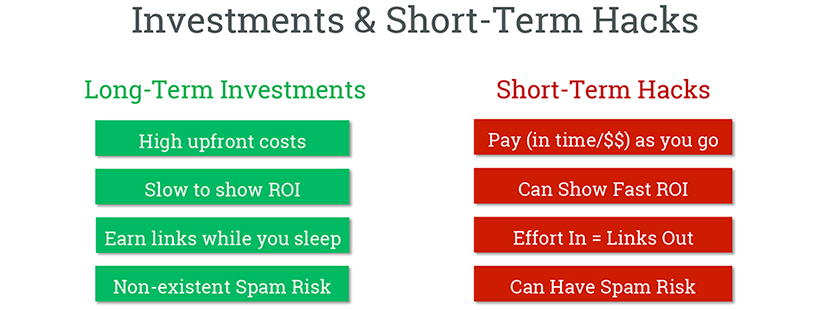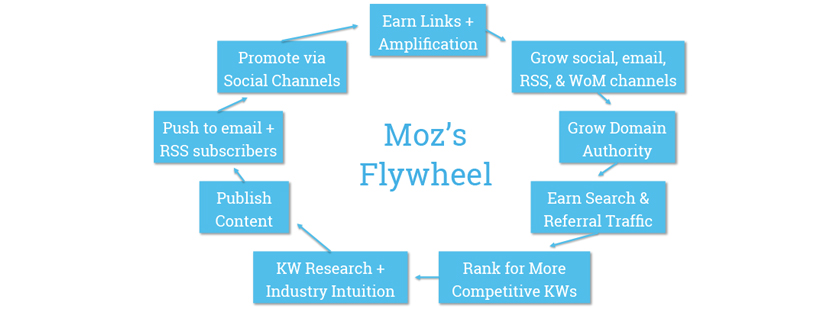High quality links take time and effort — it’s that simple. Olympic athletes don’t train the day before they compete — they train daily for years to hone their skills.
Like training for the Olympics, implementing a link building strategy also requires a great deal of effort and a significant investment of time before it starts to win gold medals (high quality links). Without a doubt, links are an important ranking factor — they’re so important that multiple companies have written guides dedicated to link building. Here are just a few:
- The Noob Friendly Guide To Link Building – Ahrefs
- The Beginner’s Guide to Link Building – Moz
- Link Building: The Definitive Guide – Backlink.io
- The Advanced Guide to Link Building – Quick Sprout
There’s no shortage of link building posts, and this isn’t meant to be another “complete guide” — it’s a (very fashionably late) discussion of Kirsty’s and Rand’s presentations at MozCon 2016, with a focus on how you can start your link building strategy.
Kirsty’s Presentation
Kirsty focused on the hurdles of link building, how to get clients to say yes to ideas, and tips for sending outreach emails. Let’s focus on sending outreach emails, as so many people do this the fast and easy way with templates. You know it, we know it, and you better believe your recipient knows it — a templated email is one of the most impersonal types of emails you can receive.
Writing a good outreach email is hard, but that doesn’t mean we shouldn’t do it.
Here are some tips from Kirsty to help you write better outreach emails:
Get to the point and be clear.
Don’t waste people’s time. Asking, “how are you” or using a lot of filler language before getting to the point of your email makes people lose interest. Don’t just allude to your ask. “I’m currently working on a campaign that I think would be a great fit for you.” isn’t going to garner a lot of responses. Tell people what you have to offer.
Don’t use apologetic language.
“I understand you’re really busy” or “I’m sorry for bothering you” — remove apologetic language from your outreach emails. Be confident that what you’re offering is interesting. (Because it should be, if you’ve done your research.)
If you have assets or information, include it!
If you have something compelling to share, like survey results, include those details in your first email! Don’t hold back information for a second or third email — you might not even get there.
Don’t lie and tell them that you’ve read their blog.
Even if it’s true, it may seem like a lie because everyone says it. Your genuine attempt at getting to know the person better may feel disingenuous because the SEOs before you ruined it — they’ve all “read their blog” too.
Put the story in the subject line of the email.
We know that subject lines are important — after reading the subject line of an email, we either choose to open or delete. An intriguing, yet clear, subject line will increase the odds of your outreach email being opened.
Use sexy language like “embargo” and “exclusive”.
Talk confidentially like those fancy PR people do. Strong language will help you sell your point. Kirsty included this link in her presentation — it’s full of PR terms to consider using in your outreach emails.
Summary
Take the time to create a well-formatted, personalized email, and you will increase your email outreach success rate. If you continue sending out generic, templated messages, you’re less likely to succeed.
Even if you craft the perfect outreach email, prepare for rejection. Olympic athletes who train hard aren’t guaranteed a medal — they face tough competition. Your outreach emails are competing with every other email flooding your prospect’s inbox. Don’t let rejection or unanswered emails get you down, keep working!
Want to read more about crafting a solid outreach email? Ahrefs recently updated their blog post about outreach. We highly recommend that you read it!
Rand’s Presentation
Rand’s talk focused on how long-term link building strategies over time yield more links for less work. On the other hand, short-term link building strategies such as building directory links, broken links, profile links, guest post links, etc. are not as effective when used by themselves — they only yield links as long as you’re putting consistent effort in over time. The amount of work you put in on day three is the same amount needed on day 300. Short-term link building tactics can help increase your visibility when your long-term strategy needs a little boost, but you shouldn’t rely solely upon short-term tactics.

Long-term strategies are like the Olympic runner who is dedicated and prepared — they take time and effort, but in the long run, it’s worth it. Rand listed five different long-term link strategies in his presentation, but let’s talk about the strategy that is most commonly used for building links: content marketing.
The Content Marketing Path
Content marketing includes things like articles, blog posts, images, and videos. Many mistake content marketing to be easy — you write a blog, you post it on social media, and you wait for a plethora of the page views, comments, and links to follow. Unfortunately, content marketing isn’t that easy.
Here are a couple examples of things we’ve heard our clients say:
“I want X number of high-quality, game-changing links to this piece of content.”
“Why isn’t my site getting any links? Why can’t you get me links?”
Clients often ask these things when they should be asking, “How can I make my content valuable to my audience?” The content marketing path requires unique, interesting content that is targeted to a specific persona. Writing soulless, boring content for the sake of writing content, or writing content that your audience isn’t interested in, won’t get you links. Examples of good content include infographics highlighting interesting data, an article showcasing a unique point-of-view, or an answer to a question. Brand voice, clear writing, and compelling images or video also help great content come to life. Content takes a lot of time and effort to create — if you put in the time and effort like like an Olympic athlete, you’re sure to see results.
So, What’s Next?
Unlike training for the Olympics, link building doesn’t need to be all blood, sweat, and tears — you just gotta know where to start. If you want to create a sustainable link building strategy, you need a flywheel.
Finding your flywheel
A flywheel, by definition is:
A heavy revolving wheel in a machine that is used to increase the machine’s momentum and thereby provide greater stability or a reserve of available power during interruptions in the delivery of power to the machine.
You can create a link building flywheel, where the wheel is your strategy that will increase your momentum and earn you links over time. Rand included an example of Moz’s flywheel in his presentation:

Moz’s flywheel uses email, RSS, and social media to get their content in front of their audience. Moz is great at creating content that its audience loves, resulting in their content getting shared and linked to, which in turn grows their email lists, RSS subscribers, and social media platforms. With this cycle, the company will repeatedly gain links every time they publish a piece of content on The Moz Blog.
Your flywheel doesn’t have to be the same in order to be successful — take a look at your business’s strengths and opportunities to help identify how you can promote your content and get more links. For example, if you have money to spend on paid social, you can promote your content to a larger audience on social media. Or, if you have existing partnerships and relationships with people or companies that will share your content, they can become a part of your flywheel. While outreach can be seen as a short-term tactic, it can also be an impactful part of a long-term strategy.
There’s a difference between someone sharing your content once, and sharing your content multiple times because you’ve built a relationship with them and they’re interested in what you do.
Want to learn more about flywheels? Rand talks about building a marketing flywheel in a Whiteboard Friday video from 2013, which is still relevant today.
Leveraging Short-Term Link Building Tactics
Sometimes long-term link building strategies need a little help. For example, you may not get many links when you push your content via email and social media if your following is small or if you aren’t reaching as many new people as you previously were.
If you’ve hit a wall or a point of friction in your flywheel, you can use short-term link building tactics to give your long-term strategy a boost. Here are a few examples Rand mentioned in his presentation:
- Republishing
- Guest Contributions
- Local Links
- Small Site/Content Acquisitions
- Be Someone Else’s Press
- Bio Links
- Resource Lists and Directories
- Giving Testimonials
- Brand, Image, and Content Reclamation
- Orthogonal Alignments (related connections such as social causes, sponsorships, employee programs, etc.)
Not all of these may be appropriate for your company — not everyone can afford to acquire a small blog, for example. Local links will also mean more for small businesses that only serve a specific service area. You need to research and decide which short-term tactics will work best for you in order to increase your reach and support your flywheel.
Start your long term strategy now.
Starting is hard and progress may be slow at first. However, Olympic athletes weren’t born with incredible endurance, brilliant aim, or mind blowing speed — they started at square one too. Your first outreach emails won’t be your best and they might not receive many responses. With practice and experience, you’ll learn what people actually respond to and write better emails. Over time, your link building flywheel will gain momentum and result in gold medal links — you just have to start training first.
Even gold medal vaulters started somewhere.
Excellent post, thanks Brittany!
Thanks Brittany,
Links seem to be neglected sometimes in local seo but they’re a significant factor for both local pack/finder as well as localized search results. This is a good review on how to get started